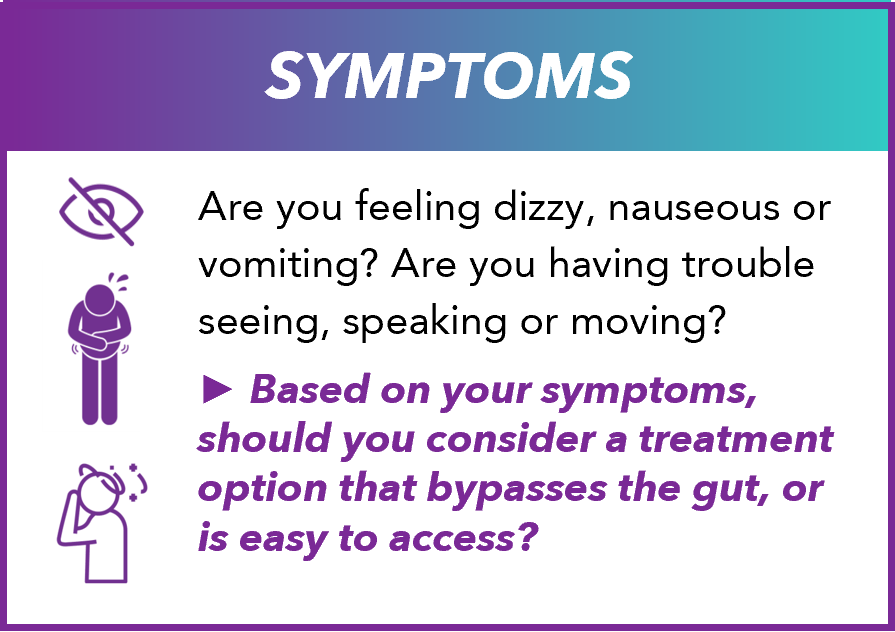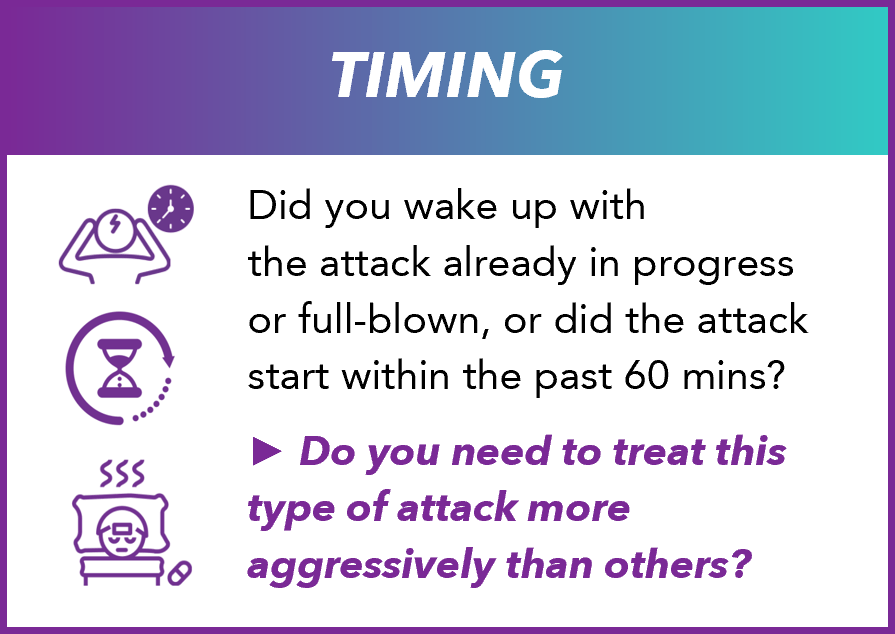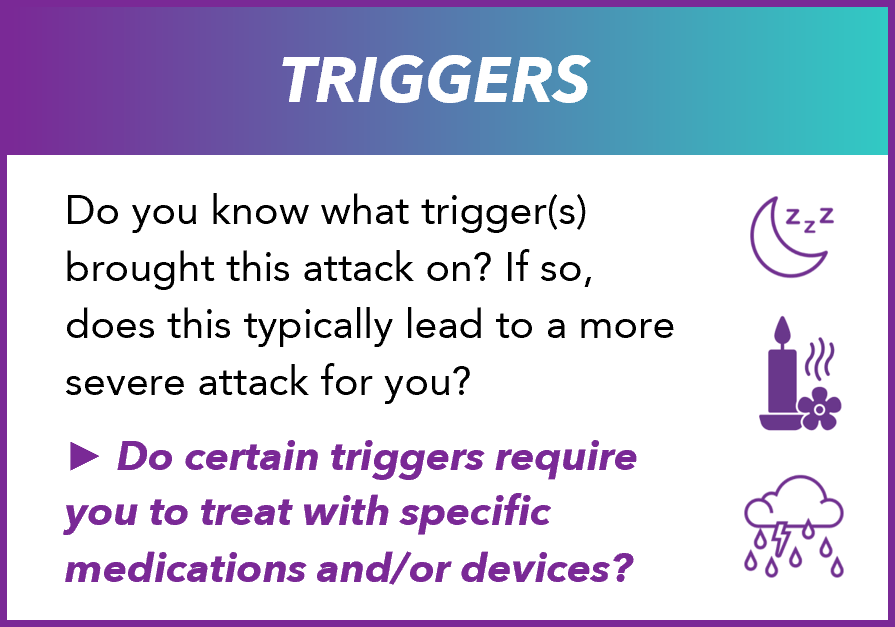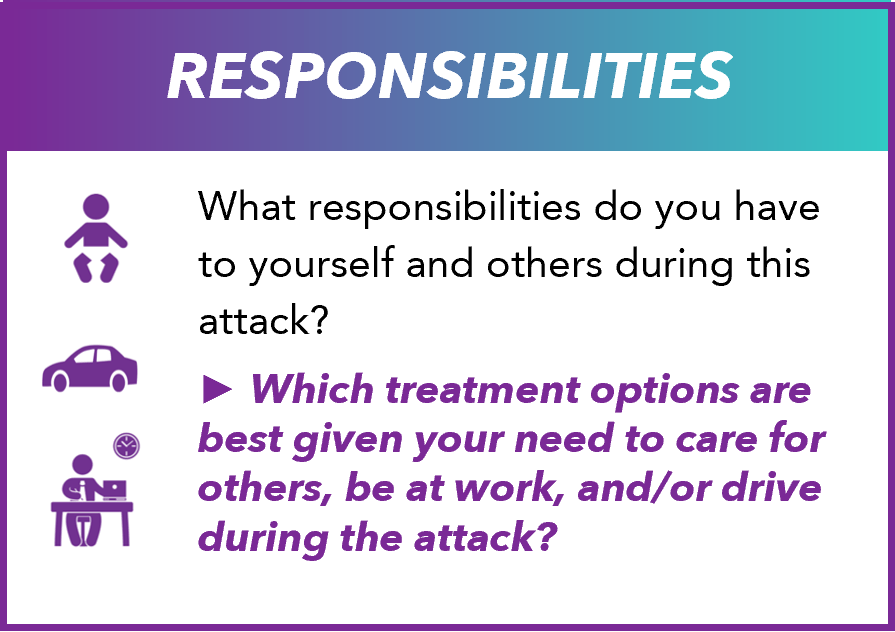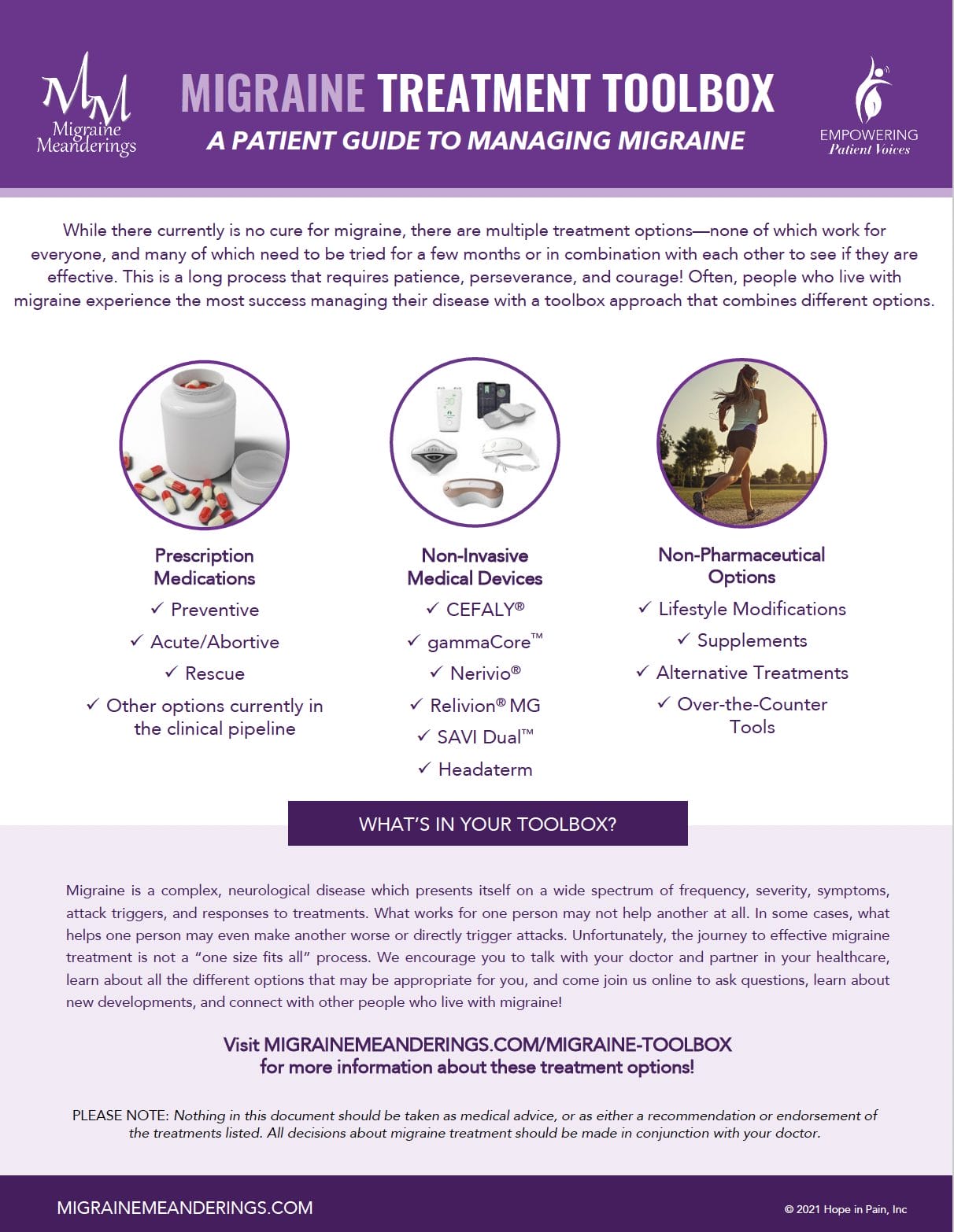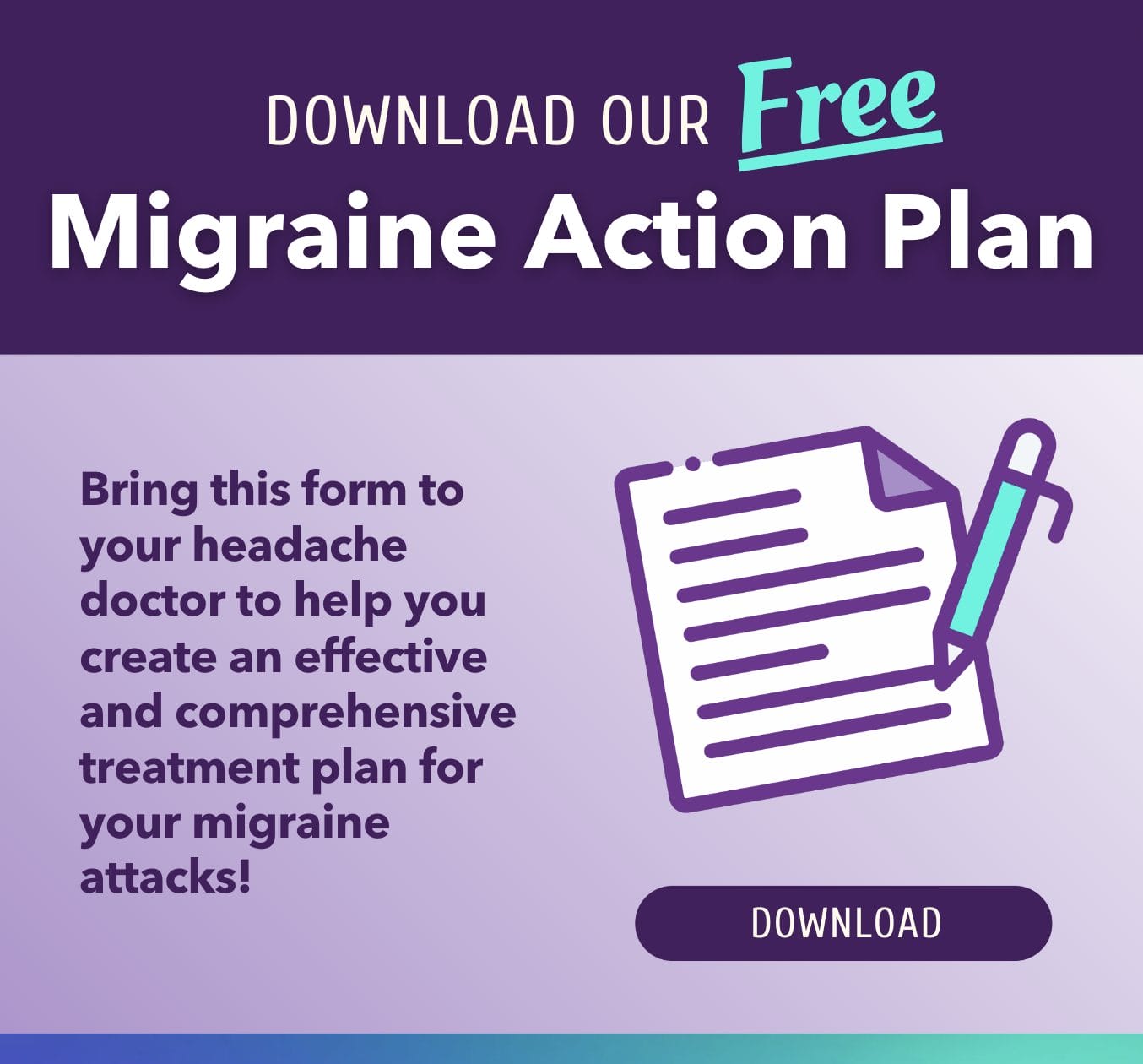Few people with migraine realize that there are multiple different ways to treat migraine attacks, and that having an attack-based care approach is key. This approach recognizes that not all migraine attacks are the same. Treatment plans may differ based on many different factors including: the timing of the attack, the pain level, the symptoms, the triggers, and your responsibilities that day. All of these play a role in how you might best treat a migraine attack. For example, if you are throwing up then an oral medication is unlikely to be your best option for treatment!
Check out our Attack Based Care information below and learn more. Then download our free PDF resouces to help you figure out how best treat your next attack, and bring them to your next doctor's appointment to ask your doctor which options they think would be good to add to your personal migraine treatment toolbox.

